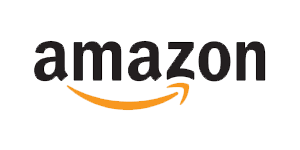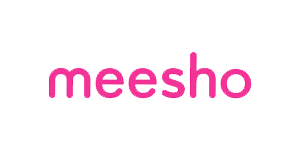Plastic storage containers are increasingly in demand these days due to their versatile applications in dynamic markets and affordable pricing. The demand from Grand View Research claims that the global plastic containers market will be almost $400 billion up to the year 2028, with an estimated growing CAGR of above 5 percent since 2021. The current situation warrants careful sourcing decisions to maximize investment. Sustainable practices are incorporated into businesses depending on quality plastic containers for safety and shelf life, thus maintaining compliance with green initiatives.
Smart sourcing dramatically influences operational performance and the bottom line. According to research from Smithers Pira, the packaging industry will progressively shift towards innovation in functionality and recyclability in plastic packaging. This involves capitalization of new material technologies while making sure that the approaches comply with the regulatory regime through strategic supplier and sourcing evaluation. This means that investment maximization in containers calls for a thorough view of the market trend, supplier capabilities, and future-oriented design options.

If you are sourcing a plastic container, understanding the wide varieties available is the first step in maximizing any investments made. The worldwide plastic processing machinery market is poised to grow from $23.57 billion in 2025 to $34.62 billion by 2032, according to the forecast, with a compound annual growth rate (CAGR) of 5.6%. This will keep the demand burgeoning into widening spheres of economical efficient solutions, especially in terms of their uses in food service and packaging. Weightage in choosing the right plastic container would definitely include as much consideration to the kind of plastic as to performance and environmental effect. Recycling regulations are new in New Zealand and underscore the trend in leaning towards doing things sustainably. From February 1, 2023, some plastics allowed for recycling operations only fall into certain categories; these are 1, 2, and 5. Such global changes in the responsible sourcing and waste management of plastics pollution-the recent past saw about 200,000 tons of plastic waste thrown here last year, from single-use cutlery and food packaging. Another aspect is the argument of paper versus plastic's environmental impact. While it's commonly accepted that paper bags are the more ecologically sound option, the amount of chemical treatments and marketing nuance can complicate that view. Businesses should weigh their decisions carefully, considering functional needs of operations along with an overview of the apparent environmental impact of sourcing strategies to get within consumer expectations and sustainable footprints.

Cost-quality differentiation is one of the key issues to be considered by the business in sourcing plastic containers. According to a report promoted by Smithers Pira, the global plastic packaging market is expected to be worth $450 billion by 2025, strongly endorsing the equity of making economically sound decisions in sourcing. One of the dilemmas faced by manufacturers is whether to compromise product integrity by going for cheaper suppliers while the other possibility is to pay more upfront and take the risk of purchasing higher quality materials that are expected to offer better durability and compliance with industry standards.
Quality does not only mean performance; it also influences the long-term sustainability of the supply chain. As an AMERIPEN study shows, packaging constitutes up to 70% of waste produced by the food industry. In choosing recyclable, sustainably produced, high-quality plastic containers, companies can minimize waste management costs and therefore meet consumer demand for environmentally friendly practices. Thus, investing in quality will lead to savings over a longer time frame, and therefore it is crucial to emphasize the informed choices made in sourcing practice.
A Freedonia Group examination states that although premiums for high-quality containers may exist, the total cost of ownership being much lower due to the costs considered which are damage in transit, product spoilage, and elevated consumer returns. Therefore, organizations must go beyond the immediate costs and take into account the future benefits afforded by high-quality materials. Weighing cost against quality allows companies the capability to make more prudent sourcing decisions, extending their return of investment and adding credibility to their brand in a tough economy.

Nowadays, sustainable sourcing practices tend to become all the more needed in dealing with the emerging complexities post-pandemic. It is strange how a pandemiced world shapes into depressing reality and yet an expectation of hope. Companies now become immediately conscious of their environmental accountability, supported by the latest sustainable development reports from eminent organizations like ESAB and Milliken & Company. These reports will describe how the organizations can make progress toward their ESG (Environmental, Social and Governance) goals and additionally reflect a bigger commitment toward sustainability that rings through industries.
In your supply chain, sustainable sourcing proves to be a powerful strategy with seriously reducing environmental footprints and still achieving business objectives. Because 85 percent of the ESG-related impacts occur within the supply chain, the organizations will have to take proactive action: for instance, how leading businesses have accepted the calling of maintaining sustainable materials and processes, before putting on-going resources into green initiatives. Achieving an operationally efficient balance with climate concerns ultimately opens the door to a more resilient future.
It becomes clearer with companies such as Porsche setting out their strategic sustainability frameworks that the need for sustainable supply chains is all the more urgent. Engaging such continuous practices towards economic viability and ecological preservation spells much for organization brand reputation and the planet. Sustainable sourcing is the way forward for nowadays businesses it is not a fad but a critical part of business that guarantees success while holding the environmental commitment towards an orthogonal future.

Modern industries experience rapid changes in the fast-moving market, which makes supplier-customer relations more relevant than ever, especially in sourcing plastic containers. When businesses create a collaborative relationship with suppliers, they reap the benefits of improved adaptability and resilience. Building partnerships with suppliers, as referenced in discussions regarding recent restructuring of global value strings, enables firms to appropriately steer through uncertain terrains and capitalize on emergent opportunities.
Collaboration with suppliers goes beyond transactional contexts to encompass sharing knowledge, resources, and strategic insights that lead to inventive solutions. Given the current overhaul in trade dynamics, firms must examine these collaborative relationships optimizing cost structures and enhancing product quality. Better sourcing decisions with reduced risks associated with the availability of materials and price volatility in plastic container sourcing can be made by knowing their supplier capabilities and prevailing market trends.
In the same vein, strong supplier relationships will also mean improved sustainability efforts, increasingly becoming a major concern for consumers as well as regulators. Eco-friendly materials and practices can be explored in conjunction with suppliers to develop a responsible supply chain. This will add value to products and gives companies an edge in the competitive market, where consumers place a premium on sustainability. Therefore, sourcing strategies must be co-developed in this new environment, making collaboration not only good business but practically a must for any return on investment.
Innovative designs in plastic containers, nowadays, cut a lot for the brand that seeks to stay ahead of the competition. Of the most interesting innovations in packaging is advanced customization and personalization that enhances the possibilities for a company to stand out among many in a saturated market. As stated in the PCR Plastic Packaging Market report, the design requirement for tailored solutions in packaging is set to revolutionize interactions as well as the loyalty relationships in a brand for the consumer. Custom-design will not only boost consumer attention but also increase user experience, combining attractiveness and uniqueness of products on the shelves.
While there are other pertinent packaging innovations, sustainability comes foremost in material consideration for plastic containers. Moving from eco-friendly food packaging materials are intelligent freshness indicators aligned within the packaging materials. Products meet quality standards and are in line with the sustainability agenda many of the consumers champion. Further, with the shift in brands using recyclable and compostable materials and bio-based plastics, there is going to be a clear transition away from traditional plastic. This complements the circularity in packaging concerning redefining sustainability through alternative uses and reduction of all forms of waste. Such a move is not merely a reaction to market demand but a requisite for brands looking towards the future.
Further, advances in packaging technology, such as AI and digital labeling, take this boundary to further levels. With the global marketplace for dietary supplement packaging pegged to hit USD 21.5 billion by 2035 owing to advancements in technology and sustainability, brands need to get their act together much faster to match consumer impatience. Brands like 3D printed packaging are leading the way with an expected market increase of 5.5% from 2024 to 2030. These trends prove that packaging design is dynamic and makes smart choices in sourcing plastic containers ever more vital for businesses aiming to make it in today's marketplace.




Copyright 2023 Harsh impex, All rights reserved | Designed by LNSEL
